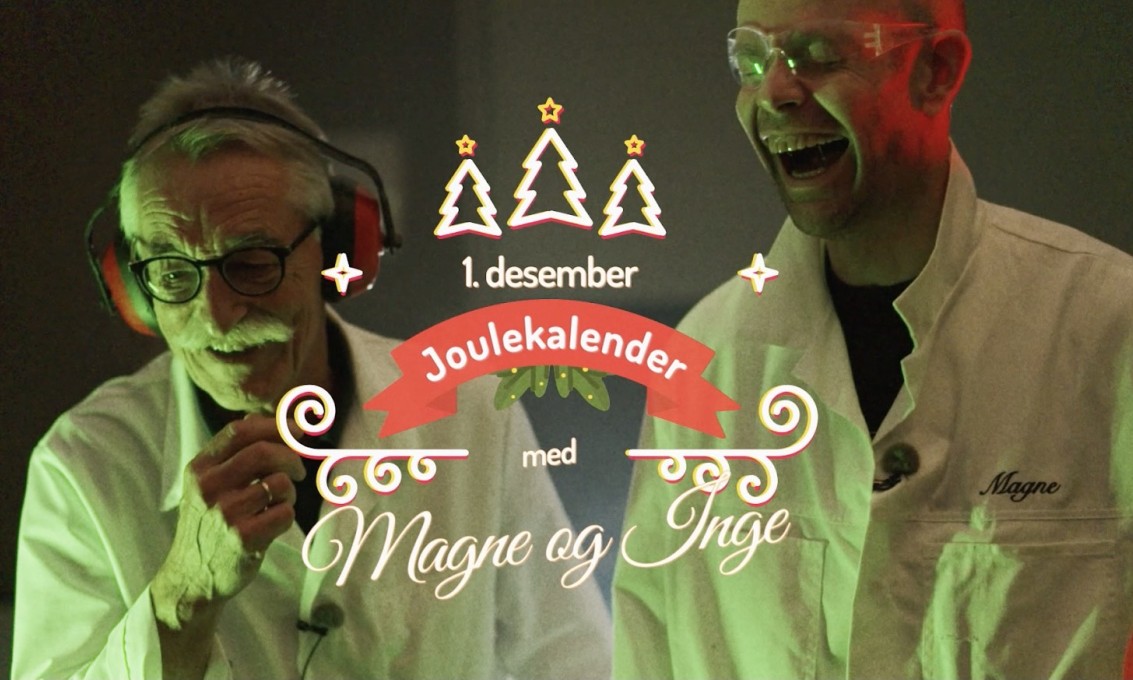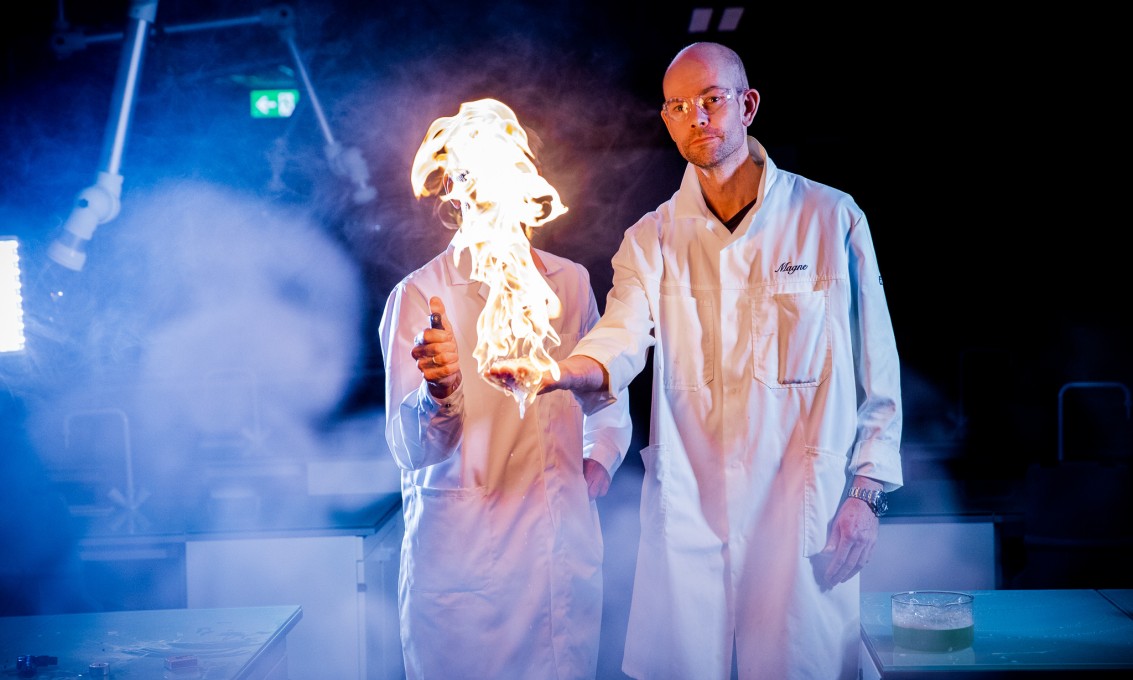Phenolphthalein, which is a crystalline substance, gets pretty in pink when it hits the basic solution.
Phenolphthalein, which is a crystalline substance, puts on the party suit in basic solution. Phenolphthalein is a universal indicator, which means that it changes colour to show the pH of certain solutions. Phenolphthalein remains colourless in acidic solutions and turns pink in alkaline solution.
NB! Experiments must always follow the safety rules that apply to laboratory experiments. Remember hearing protection and goggles
You need:
- A round flask
- Cork with hole in it and a glass tube pointed at one end (pipette)
- A large beaker
- Ammonia
- Phenolphthalein
- Glass rod with clamp
- Tripod
- Gas burner
- Protective gloves and goggles
Recipe:
- Wear safety goggles and gloves
- Take about 800 ml of water in the beaker, stir in 3-4 ml of phenolphthalein (0.1 gram of phenolphthalein in 100 ml of alcohol)
- Pour approx. 2-3 ml of concentrated ammonia in the round flask, and heat it so that the ammonia evaporates
- Use a tripod clamp with sleeve and protective gloves. Attach the cap with the glass tube to the round flask, be quick! Turn it upside down so that the glass tube licks into the beaker with the phenolphthalein solution
- The solution splashes up in the round flask like a pink fountain, enjoy the view while it lasts!
This happens because there is a negative pressure in the flask with ammonia gas when it cools down. Phenolphthalein reacts by changing colour when it enters the basic ammonia gas in the flask.
About UiS Christmas Calendar 2021:
The Joule calendar is made by Inge Christ, head of The School Laboratory of Science at UiS, and UiS professor Magne Sydnes. For the seventh year in a row, they make a Christmas calendar with chemistry and physics experiments, popular amongst both young and old. This year there is so much energy in circulation that the Christmas calendar was renamed " The Joule calendar". Joule" is one of several units for measuring energy and is pronounced “jul” in Norwegian. With “jul” being the Norwegian word for Christmas, “joule calendar” makes up a fun pun!
This year’s calendar includes a mixture of experiments that can be done at home without the risk of blowing up the house as well as experiments that should only be performed in a lab while taking the necessary precaution.

